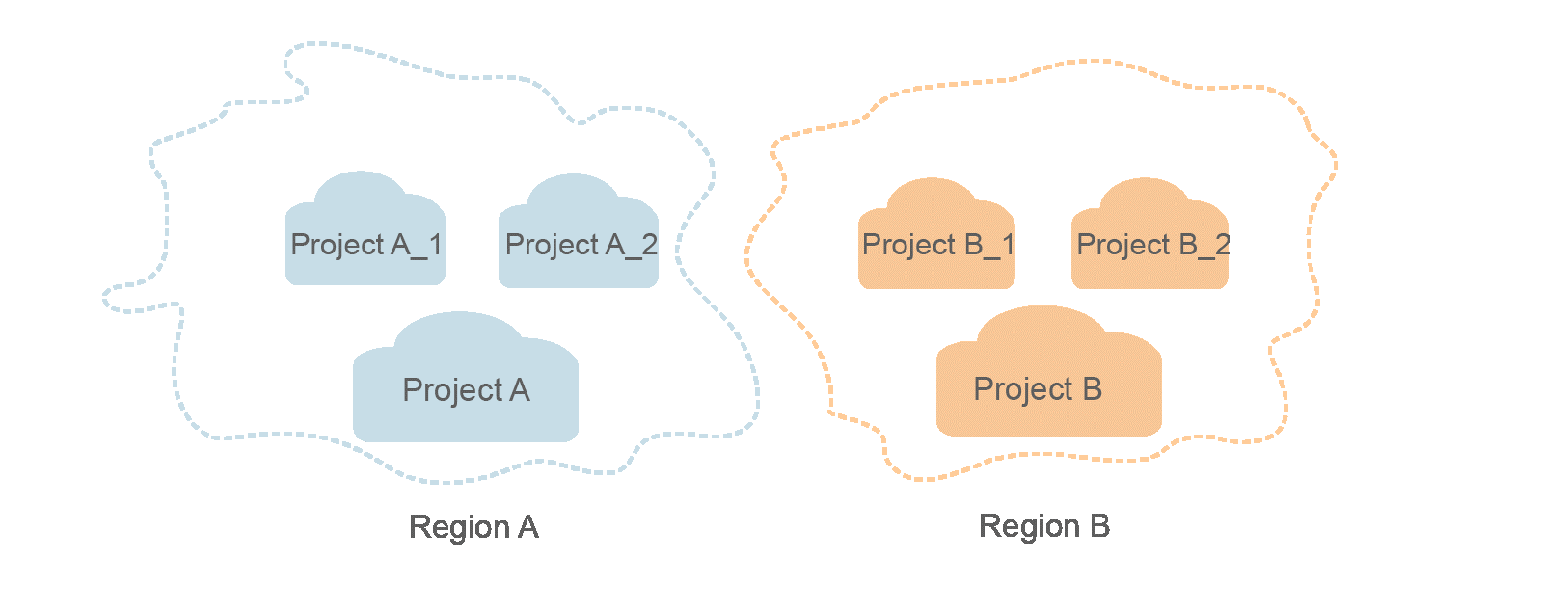Concepts
- Account
An account is created upon successful registration with Huawei Cloud and has full access permissions for all of its cloud services and resources. It can be used to reset user passwords and grant user permissions. The account is a payment entity. Do not directly use an account for routine management, but create users and assign them permissions for that.
- User
A user is created on in IAM using an account to use cloud services. Each user has its own identity credentials (password and access keys).
An IAM user can view the account ID and user ID on the My Credentials page of the console. The account name, username, and password will be required for API authentication.
- Region
Regions are divided based on geographical location and network latency. Public services, such as Elastic Cloud Server (ECS), Elastic Volume Service (EVS), Object Storage Service (OBS), Virtual Private Cloud (VPC), Elastic IP (EIP), and Image Management Service (IMS), are accessible within the same region. Regions are classified as universal regions and dedicated regions. A universal region provides universal cloud services for common tenants. A dedicated region provides specific services for specific tenants.
- AZ
An AZ contains one or more physical data centers. It has independent cooling, fire extinguishing, moisture-proof, and electricity facilities. Within an AZ, computing, network, storage, and other resources are logically divided into multiple clusters. AZs within a region are interconnected using high-speed optical fibers to allow you to build cross-AZ high-availability systems.
- Project
Projects isolate resources (including compute, storage, and network resources) across physical regions. A default project is provided for each Huawei Cloud region, and subprojects can be created under each default project. Users can be granted permissions to access all resources in a specific project. For more refined access control, create subprojects under a project and purchase resources in the subprojects. Users can then be assigned permissions to access specific resources in the subprojects.
Figure 1 Project isolation model
Feedback
Was this page helpful?
Provide feedbackThank you very much for your feedback. We will continue working to improve the documentation.See the reply and handling status in My Cloud VOC.
For any further questions, feel free to contact us through the chatbot.
Chatbot





